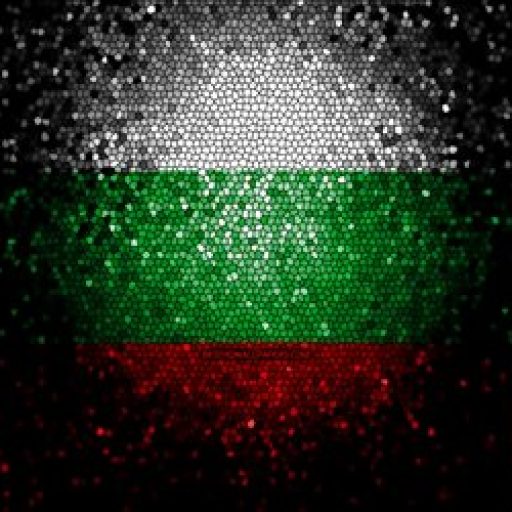Step into the fascinating world of ancient civilizations at the Archaeology Museum in Plovdiv. This remarkable institution, established in 1882, beckons history enthusiasts with its rich collection of over 100,000 exhibits spanning from pre-history to the Middle Ages. As you journey through its seven halls, you will be transported back in time, surrounded by a treasure trove of artifacts. From Neolithic pottery and Heliolithic tools to ancient Greek art and medieval church plates, the museum offers a comprehensive glimpse into the diverse cultures that once thrived in the region. Delve into the depths of history as you explore the meticulously curated displays of silver vessels, golden jewelry, and even medical instruments from burials in Philipopolis. The museum’s numismatic museum fund, boasting 60,000 coins dating back to the 6th century BC, is sure to captivate numismatists and historians alike. Whether you are an avid scholar or simply curious about the past, the Archaeology Museum in Plovdiv promises an enlightening and immersive experience.
Key Takeaways
- The Archaeology Museum in Plovdiv was established in 1882 and is located in the center of the city.
- The museum has a completely renovated building that opened in October 2010 and houses over 100,000 exhibits.
- The museum displays finds from pre-history to the Middle Ages in seven halls, including pottery, jewelry, tools, ancient Greek art, medical instruments, and items from the Renaissance period.
- The museum also has a numismatic museum fund with about 60,000 coins dating back to the 6th century BC to the 20th century.
What is it?
The Archaeology Museum in Plovdiv is a renowned institution that houses a vast collection of over 100,000 exhibits, ranging from prehistoric artifacts to items from the Middle Ages, and is located in the center of Plovdiv. The museum holds significant historical artifacts that provide valuable insights into the region’s rich history. The exhibits are presented in seven halls, showcasing a diverse range of objects. Among the oldest exhibits are pottery, jewelry, and tools from the Neolithic, Heliolithic, and Bronze Age periods. The museum also boasts a rich collection of ancient Greek art, including silver vessels and golden jewelry. Additionally, medical instruments from various burials in Philipopolis are exhibited. Visitors can also explore tools, jewelry, glass bracelets, and necklaces from the 11th-13th century, as well as luxurious ceramics, stone sculptures, and church plate from the Middle Ages. The museum also houses a collection of old books and items from the Renaissance period, as well as a numismatic museum fund with approximately 60,000 coins dating back to the 6th century BC to the 20th century.
Exhibits and Collections
With over 100,000 exhibits spanning from pre-history to the Middle Ages, the Archaeology Museum in Plovdiv houses a diverse range of artifacts. The museum’s collection includes notable artifacts such as pottery, jewelry, and tools from the Neolithic, Heliolithic, and Bronze Age periods. The museum also boasts a rich collection of ancient Greek art, featuring silver vessels and golden jewelry. Medical instruments from various burials in Philipopolis are exhibited, offering a glimpse into ancient medical practices. Additionally, the museum showcases tools, jewelry, glass bracelets, and necklaces from the 11th to 13th centuries. The collection further includes luxurious ceramics, stone sculptures, and church plate from the Middle Ages. Not only does the museum house these artifacts, but it also focuses on conservation efforts to ensure their preservation for future generations.
Visitor Information
Located in the center of Plovdiv, the Archaeology Museum offers visitors a wealth of information about its exhibits and collections. The museum provides various visitor facilities to enhance the overall experience. It is open from May to October, Tuesday to Sunday, from 10:00 to 18:00, and from November to April, Tuesday to Saturday, from 09:30 to 17:00. The museum is closed on Mondays, and tickets are sold until 17:30 in summer and 16:30 in winter. Admission fees are required to enter the museum. Additionally, informational materials, books, and souvenirs are available for purchase. Visitors can also access the museum’s website, which contains images, advertising, and video materials owned by the Ministry of Tourism. For further inquiries, the Regional Archaeology Museum can be contacted via phone at +359 32 624 339 or through email at RAM.Plovdiv@gmail.com.
Frequently Asked Questions
How much does it cost to visit the Archaeology Museum in Plovdiv?
The cost of admission to the Archaeology Museum in Plovdiv is currently unknown. However, it is common for museums to offer discounts for students and seniors, so it is possible that these discounts may be available at this museum as well.
Are there any guided tours available at the Archaeology Museum?
Guided tours are available at the Archaeology Museum in Plovdiv. These tours provide in-depth information about the exhibits and the rich history of the museum. The museum is also accessible for disabled visitors.
Can I take photographs inside the Archaeology Museum?
Photography policies at the Archaeology Museum in Plovdiv include the allowance of taking photographs inside the museum. However, it is recommended to check with museum staff for any specific restrictions. Entrance fees apply for visitors to access the museum.
Are there any special events or temporary exhibitions at the Archaeology Museum?
The Archaeology Museum in Plovdiv offers a multitude of special events and temporary exhibitions throughout the year. These events showcase a diverse range of topics, providing visitors with unique and enriching experiences.
Is there a gift shop at the Archaeology Museum where I can purchase souvenirs?
The Archaeology Museum in Plovdiv has a gift shop where visitors can purchase souvenirs. The shop offers a variety of options, including informational materials, books, and other items related to the museum’s exhibits and the history of Plovdiv.












